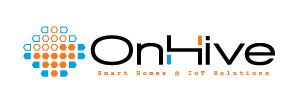Top 4 Cyber Security Tips: Business Data
Image: Freepik.com
“Protecting Your Business from Cyber Threats: Strategies for Safer Online Operations”
Did you know that data breaches often result in businesses shutting down? Even if a company is thriving and winning in the market every day, all of that can be lost with just one cyber attack that cripples day-to-day operations. With business secrets out, customer trust lost, and a ruined brand reputation, it’s often impossible to rebuild. Many business owners are unaware of the threat of data breaches and run their daily operations using fragile IT and network infrastructure with zero cybersecurity event mitigation plans, tools or recovery strategy in place . Here are some simple ways that your business can keep its data protected.
Virtual Local Area Network (VLAN)
Encryption ensures that your customer and business data is safe from outside interest. To start, make sure that your office's main network is encrypted and segregated through a VLAN, on this network all critical infrastructure to your day-to-day business should be connected either wired or wirelessly. Any guest, public or non-critical devices should be on a separate VLAN network with its own encryption key.
To allow for secure extending of a private network over a public network (the Internet), and it is more often related to remote access to company’s network resources. We recommend the use of virtual private network (VPN) technology for all remote employees.By connecting to a virtual private network, you can create a safe virtual tunnel between your device and the website you’re visiting. The tunnel encrypts all traffic that passes through it, hides your real IP address, and makes it possible for you to access geo-censored content.
Use Multi-Factor Authentication (MFA)
Quite possibly the lowest hanging fruit and highest ROI SSO/SCIM implementation strategy would be to add 2FA to all your assigned digital accounts. While one could easily become a target to a phishing spam where the password is obtained, the added layer of MFA authentication could protect further access into the applications and additional data breach.
Raise Phishing Awareness
Phishing is one of the biggest threats to any business’s data security, and you need to ensure that all employees are aware of it. Phishing is when threat actors send email or text messages to people and pretend to be someone they’re not. Quite often they mimic and duplicate what you would likely expect to see or receive from the contact on a day-to-day basis. These messages usually aim to steal specific data from people to gain access into the business network or operations management platforms.
People who aren’t educated on the most common phishing schemes are very likely to give away their information if they get targeted. So, you should set some clear communication protocols with your employees. Instruct them to never send their passwords through email, never click on random links they receive through email, and verify any suspicious requests before taking action.
Data Backup
If all of your business devices were lost in fire, flood, DDoS or Ransomware attack , would your data still be safe and backed up? Would you be able to migrate the data and restart operations with minimal interruption? Most businesses have some sort of data backup set up, but it’s often within the premise of operation or under a single service platform. The ideal solution is to have multiple backups. For example, you could have data stored on a business NAS server and also backed up to a cloud data and file sharing platform like Dropbox, Box, OneDrive, Google Drive etc. Hence, building redundancy and resilience to potential nefarious attacks or data loss and sabotage.

